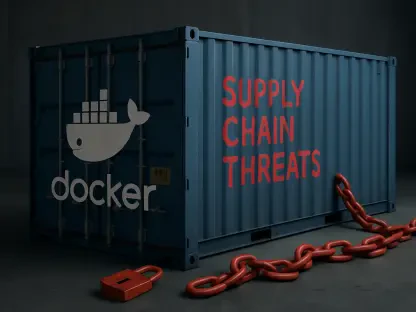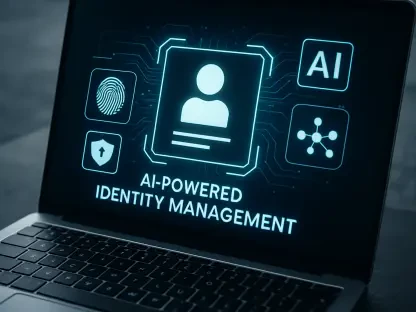Introduction
Imagine a leading telecommunications giant, responsible for connecting businesses across the globe, suddenly brought to a standstill by a sophisticated cyberattack, an event that became a harsh reality for Colt Technology Services. This prominent British company faced a severe ransomware breach by the Warlock group, disrupting critical operations and raising pressing questions about cybersecurity in an increasingly digital world. Understanding how such an attack unfolds and how a company responds is vital in today’s threat landscape, where data breaches can cost millions and erode customer trust.
The purpose of this FAQ is to address key concerns surrounding the cyberattack on Colt Technology Services, exploring the nature of the breach, its impacts, and the strategies employed for recovery. Readers can expect to gain insights into the specific challenges faced, the timeline of restoration efforts, and the broader implications for cybersecurity practices. By delving into these aspects, this content aims to provide a comprehensive overview of a significant incident that underscores the importance of robust digital defenses.
This discussion will cover the origins of the attack, the operational disruptions caused, and the multifaceted response mounted by the company. Each section is designed to answer pivotal questions with clarity and detail, ensuring a thorough understanding of the event. Whether concerned about business continuity or seeking lessons in cybersecurity, readers will find valuable takeaways from this analysis of a real-world crisis.
Key Questions or Key Topics
What Was the Nature of the Cyberattack on Colt Technology Services?
The cyberattack on Colt Technology Services was a ransomware incident orchestrated by the Warlock group, a known malicious entity in the cybercrime sphere. This breach targeted the company’s business support system (BSS), a critical component for managing customer interactions and operational workflows. The significance of this attack lies in its use of double extortion tactics, where data is encrypted and simultaneously threatened with public release unless a ransom is paid, amplifying the pressure on the affected organization.
Such tactics are increasingly common among ransomware groups, aiming to exploit both technical vulnerabilities and psychological leverage. In this case, the attackers claimed responsibility by posting stolen data on a dark web auction site, though the specifics of the data remain undisclosed to the public. The method highlights the evolving sophistication of cyber threats, where attackers not only disrupt operations but also weaponize stolen information for financial gain.
Evidence suggests that the breach likely exploited vulnerabilities in SharePoint, a widely used platform for data sharing and collaboration. Insights from cybersecurity experts and telemetry data indicate that data exfiltration occurred before Colt pulled the affected server offline. This points to a critical need for regular updates and patches in software systems to prevent similar incursions, showcasing how even established companies can fall prey to overlooked weaknesses.
How Did the Cyberattack Impact Colt’s Operations and Customers?
The immediate aftermath of the ransomware attack saw widespread operational challenges for Colt Technology Services, particularly in customer-facing platforms. Essential tools like customer portals, network management systems, and hosting APIs became unavailable, severely limiting clients’ ability to manage their services. This disruption created a ripple effect, hampering business continuity for many who rely on Colt’s infrastructure for daily operations.
Beyond technical interruptions, billing processes faced significant delays, with issues in issuing invoices and managing direct debit collections. Although payment due dates remained unchanged, the inability to process transactions smoothly posed financial inconveniences for customers. The scale of these disruptions underscores how a single breach can cascade through an organization’s ecosystem, affecting stakeholders at multiple levels.
The prolonged nature of these impacts, with full recovery projected to take several months, reflects the complexity of restoring compromised systems. Customers experienced frustration over limited access to critical services, which in turn strained trust and communication with the company. This situation serves as a stark reminder of the far-reaching consequences of cyberattacks, extending beyond technical fixes to reputational and relational damage.
What Was Colt’s Response Strategy to Mitigate the Damage?
In response to the cyberattack, Colt Technology Services adopted a structured and phased approach to recovery, prioritizing the restoration of critical customer services. The company outlined a timeline aiming to resolve key issues within 8-10 weeks, with full system recovery expected to span over three months from the initial incident. This deliberate sequencing was designed to ensure stability and minimize further disruptions during the rebuilding process.
Collaboration with external experts played a central role in the mitigation efforts. Third-party cybersecurity specialists were engaged to investigate the breach, conduct penetration testing, and secure unaffected systems like the operational support system (OSS). Additionally, Colt reported the incident to authorities across 27 countries, filing over 75 notifications to regulators and law enforcement, demonstrating compliance with global legal obligations and a commitment to transparency.
A notable, though controversial, aspect of the response was the company’s willingness to liaise with the Warlock group on behalf of customers to assess the nature of the stolen data. This pragmatic step aimed to manage the fallout from the dark web auction of compromised information. Such actions, paired with regular updates to clients, illustrate a multifaceted strategy balancing technical recovery with stakeholder communication amidst a high-stakes crisis.
What Broader Lessons Can Be Learned from This Incident?
The cyberattack on Colt Technology Services highlights the persistent and evolving threat of ransomware in the corporate world. One key lesson is the critical importance of proactive cybersecurity measures, such as regular software updates and vulnerability assessments, to prevent exploitation of platforms like SharePoint. Companies must prioritize these defenses to safeguard sensitive data and maintain operational integrity against increasingly sophisticated threats.
Another takeaway is the value of preparedness and collaboration in crisis management. Colt’s engagement with external experts and authorities showcases how partnerships can enhance response capabilities, providing specialized skills and regulatory support. This approach can serve as a model for other organizations facing similar breaches, emphasizing that internal resources alone may not suffice in addressing complex cyber incidents.
Finally, the incident reveals the necessity of clear communication with stakeholders during a crisis. By issuing weekly progress reports and maintaining transparency about recovery timelines, Colt sought to preserve customer trust despite significant disruptions. This underscores a broader principle: managing perception and maintaining open dialogue are as crucial as technical fixes in navigating the aftermath of a cyberattack.
Summary or Recap
This FAQ distills the critical aspects of the cyberattack on Colt Technology Services, shedding light on the ransomware incident perpetrated by the Warlock group. Key points include the targeting of the business support system, the operational disruptions affecting customer platforms and billing, and the extended recovery timeline spanning several months. Each question addressed provides a piece of the puzzle, from the nature of the attack to the strategic response mounted by the company.
The main takeaways center on the severity of double extortion tactics and the importance of robust cybersecurity defenses to prevent such breaches. Colt’s phased recovery approach, external collaborations, and regulatory compliance efforts highlight a comprehensive strategy to mitigate damage. These insights emphasize the need for preparedness and resilience in the face of digital threats that can impact entire business ecosystems.
For those seeking deeper exploration, resources on ransomware prevention, cybersecurity best practices, and incident response frameworks are recommended. Understanding these areas can equip businesses with the tools to fortify their defenses and respond effectively to similar challenges. The narrative of Colt’s experience serves as both a cautionary tale and a guide for navigating the complex terrain of cyber threats.
Conclusion or Final Thoughts
Reflecting on the ordeal faced by Colt Technology Services, it becomes evident that even major corporations are not immune to the devastating effects of ransomware attacks. The incident exposed critical vulnerabilities and tested the company’s ability to adapt under pressure, revealing gaps that many businesses might overlook. The prolonged disruption and the audacious moves by the Warlock group served as a wake-up call for the industry at large.
Moving forward, organizations should consider investing in advanced threat detection systems and regular security audits to close potential entry points for attackers. Establishing a well-defined incident response plan, backed by partnerships with cybersecurity experts, proved to be a lifeline for Colt and could be for others as well. These steps, combined with employee training on recognizing phishing attempts and other risks, could significantly reduce exposure to similar threats.
Ultimately, the experience of Colt Technology Services prompts a reevaluation of how businesses approach digital security in an era of relentless cyber threats. Readers are encouraged to assess their own systems or those of their organizations, identifying areas for improvement before a crisis strikes. Taking proactive measures today could make all the difference in averting a future disaster, turning lessons from this incident into actionable safeguards.









